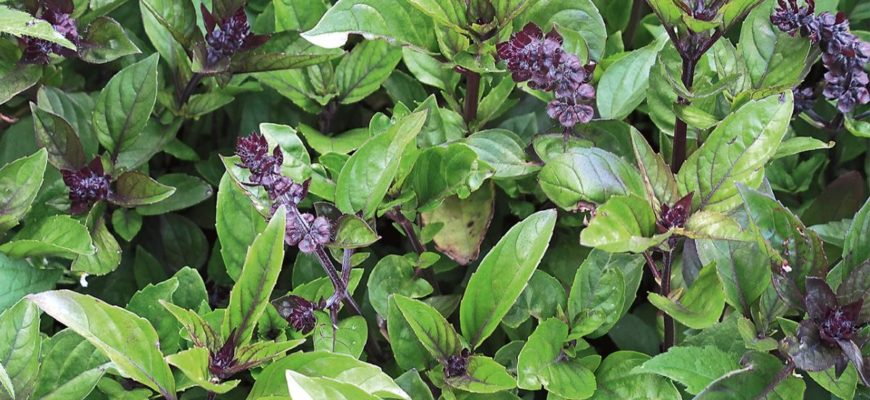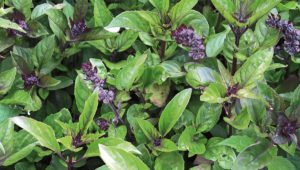
Find out more about the Peppermint plant of our Aromatherapy Herbarium blog series.

PEPPERMINT
Mentha x piperita
DESCRIPTION

Mint is a perennial plant of the Lamiaceae family, which with more than twenty five species (pennyroyal, spearmint, water mint), some of which are ground covers and do not exceed three centimetres (Corsican mint). It likes a drained, fertile and cool soil.
ADVICE
Do not take a bath with essential oil of mint unless it is diluted in a carrier oil, milk or neutral base for the bath. For cooking, one drop of essential oil is enough to perfume a dish for five to six persons.
DO NOT USE IN
– pregnant or breast-feeding women,
– children under the age of seven years (menthol, ketones),
– persons allergic to one of the components,
– subjects with asthma without the advice of an allergologist before the first use,
– subjects with epilepsy.
RECIPES
Heat
In case heatwave, pour into a full shower gel bottle 1 to 2 drops maximum of essential oil of mint.
Itching
Dilute 3 drops of essential oil of mint in 10 drops of calendula oil. Massage the irritated zone three times daily.
Psychical fatigue
Breathe in the essential oil of mint from the vial or use in diffusion, but not more than one hour per day.
Headaches
Place 1 drop of essential oil of peppermint on the temples (far from the eyes) and the frontal sinuses.
Digestive disorders
Place 1 to 2 drops of essential oil of mint on a sugar lump or in a teaspoon of honey. Swallow after the meals or in case of “blocked” stomach and ballooning.

Its leaves are covered by rounded secretory hairs in which fragrant volatile substances accumulate. The history of mint goes back to a domestic dispute in Olympus. Hera was furious to see that Zeus, her wayward husband, was holding the nymph Minthe too closely and transformed her rival into a wild plant, however she forgot to deprive her of her fresh and tempting fragrance. Hippocrates and Aristotle mistakenly believed that the plant was an aphrodisiac since it was born from a lascivious nymph. In reality it is only a tonic and a stimulant. Mint leaves have been found in sarcophaguses in Egypt and it is mentioned as a remedy for stomach pains in the Ebers Papyrus, the oldest known medical treatise. Five centuries B.C. it was prescribed in Babylon to relief abdominal pains, and today it plays an important role in the food industry. Romans perfumed their wine with it, in the same manner as tea is flavoured in the Arab world. A friend of clear thoughts and logic, it played a stimulant role for students to whom Pliny recommended to wear and braided mint crown on the head.
CULTIVATION AND PRODUCTION
The various mints are cultivated throughout the world, especially in India, Morocco (Mentha viridis), Europe and North America. Peppermint needs sixteen hours of daylight to flower. The market of essential oil of mint is one of the biggest in the world and the United States are the first producer. France produces little, however the quality is remarkable.
FRAGRANCE
Peppermint is principally used in the perfume industry, where menthol bestows a very strong odour and a well known “ice cube effect”. “Curly” mint (Mentha viridis) has a clearly more herbal plant odour.
EXTRACTION AND YIELD
Good quality leaves of Mentha piperata for aromatherapy contain more than nine millilitres of essential oil per dry kilogram. The yield of the distillation of a hundred kilograms of leaves and flowering tops varies considerably depending on the mints and places: between two hundred grams and two kilograms of essential oil. The yield for peppermint is of 0.8% to 1.2%, i.e. eight hundred grams to a twelve hundred grams of essential oil per hundred kilograms of fresh plant.
CHEMICAL FORMULA
The chemical composition of Mentha piperata strongly varies depending on the soil and the time of harvest. Essential oil of peppermint is mainly composed of menthol (30% to 40%), menthone (20% to 65%), esters, coumarins and sulphur compounds.
MAIN INDICATIONS
Double blind experiments have widely confirmed the efficacy of essential oil of peppermint on digestive disorders, indigestion, acid reflux, vomiting and travel sickness. A tonic for the body and the spirit, an antispasmodic and a strong analgesic, it soothes all sorts of pains: shocks and injuries, tendinitis, sciatica, rheumatism, headache, neuralgia, Herpes zoster, herpes. It makes all sort of skin itching disappear. It is anti-bacterial and anti-dust mites.


Leave a Comment